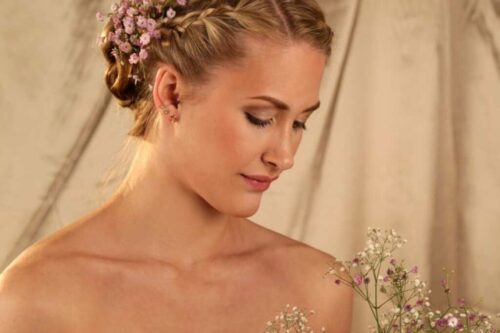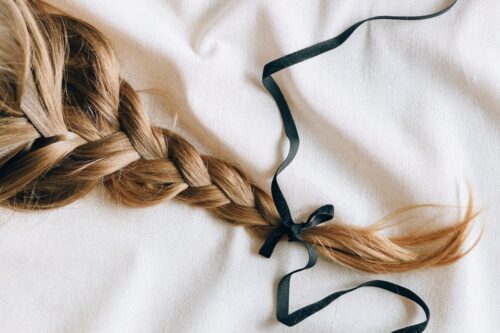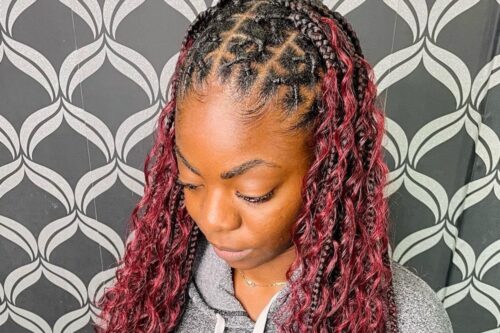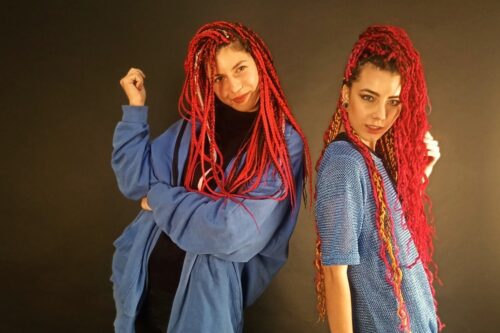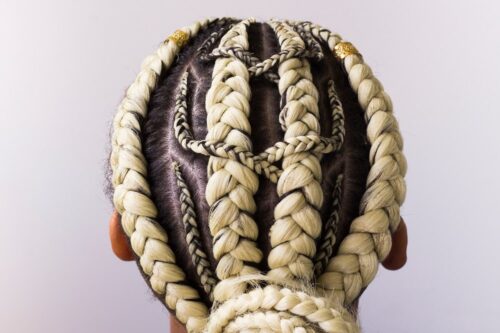There is always a way to make your natural hair look fabulous daily. We have tried various hairstyles. But the count of us just admiring a hairstyle and never trying it out is much higher. We often step back from looking gorgeous with a hairstyle by thinking that it may be too difficult to recreate, which might not always be the case. The perfect solution for this is making up your mind and finding the easiest steps which will help you.
African braids, most commonly called, cornrows are a hairstyle most people love but hesitate to try. You need not worry because we have got it covered for you! These braids are perfect for people with heavily textured hair or with very high volume hair, which can be a headache to take care of. However, it is widely loved by the people having straight, low volumed hair as well because of how good it looks on everybody. If you know the basics of making a simple braid, this might as well be just a piece of cake for you! We have listed the steps in the simplest ways along with everything you need, so nothing is standing in the way of you trying it.
Supply – Things You Need To Make African Braids
- Brush
- Hair Mousse or leave-in conditioner
- Comb to part your hair evenly
- Hair ties/ elastic to secure
Detailed Steps to Make African Braids
- For this hairstyle, it is best if you wash your hair to get rid of any frizz.
- Whilst your hair is damp, run your brush thoroughly through your hair to completely detangle it. A mousse or a leave-in conditioner comes in handy at this point as it gets rid of the knots faster and keeps your hair moisturized and neat. (In case your hair is naturally coiled, blow-drying before braiding really does the job well)
- Now that your hair is detangled start by parting your hair in rows. The rows may be straight or a little swirly, depending on how creative you want to be with it. Using a comb to do so is the right choice.
- Secure each row with bobby pins or elastics, so it becomes easier while braiding. It is not necessary to have a middle part as well. It can be flexible according to your will.
- Now, please pick up a row and divide it into three sections. Make sure that all three sections are even.
- It is now time to start braiding by picking up either side from the center (here assuming left) and crossing it over the middle strand.
- Do the same with the other side now crossing over the center.
- This time when you are crossing the left side over the center again, make sure to add some hair to it from the same row underneath.
- Do the same for the other side by adding hair from the row.
- Continue the same procedure until you reach the end of the braid.
- Make sure that the braid is kept tight at all times, and the amount of hair added in each step is not uneven, or it will give out a shabby look.
- Once you reach the ends, secure it with an elastic.
- You have to repeat the same steps for all the rows until you have braided them all.
And there you go! Your African braid is ready! Go creative with it, start parting from the side of your hair, make the partings swirly, zig-zag, or whatever suits your personality the best! You can also accessorize your braids or simply make them in a ponytail!
Different Types Of Cornrows
Originally, only two types of braiding techniques are involved in cornrows- overhand and underhand. The former is renowned for providing a close to scalp look where braids look like they are sitting on the top of your scalp. On the other hand, the latter gives an inverted look where the braids appear as if they are not on the scalp’s top.
Although braids are used as a preventive measure to control hair fall and give your hair some rest, they can have opposite effects. Many people get cornrows to take rest from daily maintenance and styling of long and unmanageable hair. However, if braided too tightly, you can lose much hair at once. Most importantly, many hair specialties encourage their clients not to wear cornrows for more than 2-3 weeks. Weaving cornrow braids can take anywhere up to 5-8 hours depending on factors such as quantity, hair texture, the width of braids, and density of hair, etc. Owing to its intricacy, there is room for creativity, and you can try different textures, patterns, and thicknesses of braids.
Tips To Get The Best Out Of This Hairstyle
1. Prepping Your Hair
Before moving further, it is essential to prep your hair and scalp with some deep nourishing hair masks and hair oil a day or two before. If you have sensitive skin that inches due to synthetic hair, try rinsing your hair with some diluted apple cider vinegar.
2. Don’t Use Products On Your Edges
If you want your gorgeous cornrows to last long, then make sure not to apply too many hair products to your edges. This trick will not only minimize the number of hair washes but also reduce frizziness, dryness, and product build-up on your scalp as well. Moreover, always use a pea-size of the product to set your edges.
3. Silk Pillow Covers- Your New Best Friends
You must have always heard that silk is your hair’s best friend as it prevents breakage and reduces hair fall. Similarly, make sure to use a satin or silk scarf to protect your cornrows. Silk bonnets are also a great idea if you have long or medium-length braids.
No, African braids are mainly used for your hair to help take time to grow and heal. So, they are perfect if you are looking for a hairstyle that gives your hair a break.
African braids don’t damage your hair as such, but if they are not undone or redone for a long time, it may result in your hair feeling dry and dull.
The only answer to this is that if your hair is done extremely tightly, it starts pulling your hair, which makes you uncomfortable and allows dirt to enter the skin—hence resulting in itching. It is best to make them tight enough that they do not open easily but not as tight as harming your hair.

